Summer is the season of sweet, tart, and juicy stone fruits! Stone fruits get their name from the pit or “stone” in the centre, encased by its fleshy outer area. The peak season for these delicious fruits is, of course, the summer, from around mid-May to late August, give or take a few weeks in either direction.
While peaches, plums, apricots, and nectarines are well-known stone fruits, a few others on our list might surprise you. For example, did you know that raspberries, blackberries, and even coconuts fall under this category? Raspberries and blackberries are known as “aggregate fruits”, where each drupe (those little bulb-looking parts) contains a single seed. That’s right—they’re not technically berries at all!
Discover more about stone fruits in our guide that includes nutrition facts, how to enjoy them, how to store them, recipes, and more!
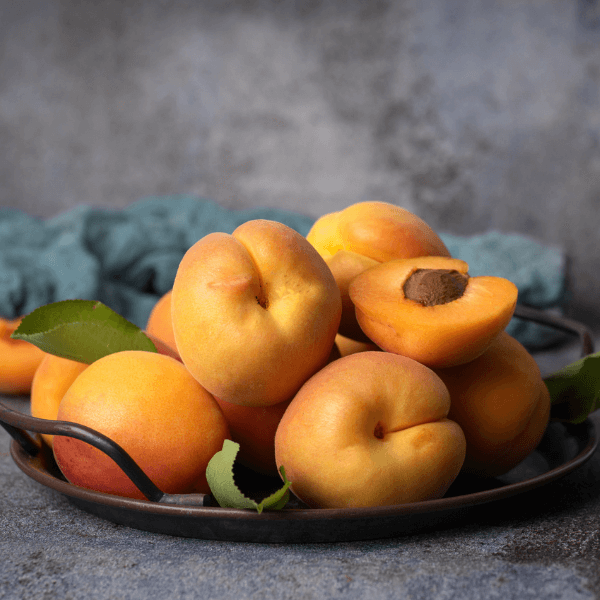
Apricot
Flavour: Tart, juicy, and sweet.
Appearance: Smaller than a peach, apricots have very minimal fuzz on their skin. They range in colour from pale orange to golden yellow.
Nutrition: Source of antioxidants and vitamins A and C.
How To Enjoy: This tart stone fruit is often dried for a more intensely sweet flavour, but you can enjoy them fresh, too. Apricots also work well in jams, compotes, and scone recipes. For a savoury take, try them in salads, with pork, or on your charcuterie and cheese boards.
How To Store: Keep unripe apricots on your counter. Ripe apricots will keep in the fridge for 1-2 days.
Recipe To Try: Grilled Fruit Platter with Creamy Tri-Nut Dip
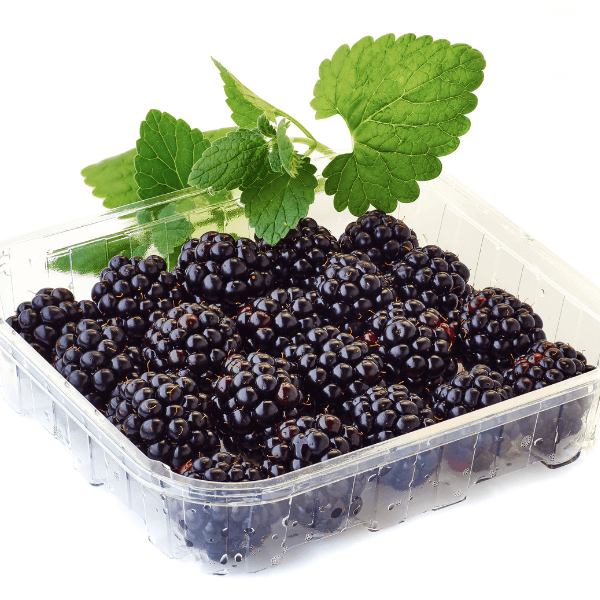
Blackberry
Flavour: Tart, sweet, juicy, and almost floral.
Appearance: Ripe blackberries are a dark purple or black colour, with smooth, glossy druplets.
Nutrition: Source of fibre, vitamins C and K, and manganese.
How To Enjoy: Blackberries do extremely well when cooked. Try them in cobblers, crisps, jams, and jellies. If you’d like to enjoy them raw, they also taste fantastic in salads for a burst of sweetness, or fresh in-hand.
How To Store: Store blackberries unwashed in an aerated container. Keep this container in the crisper drawer of your fridge, set to low humidity.
Recipe To Try: Savoury Dark Berry Compote
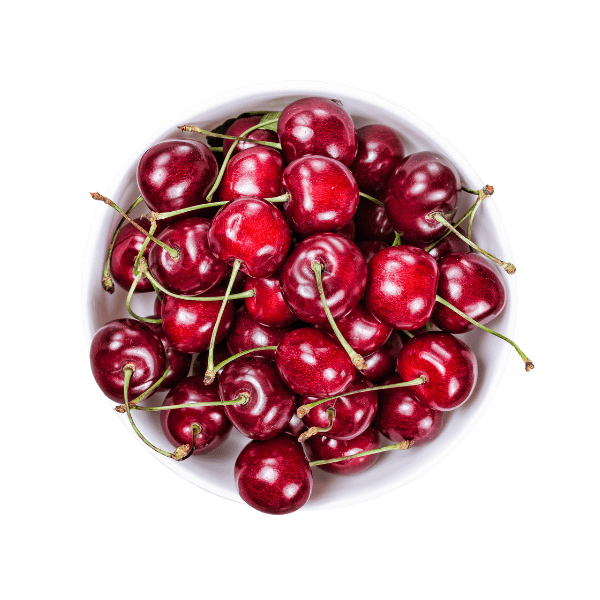
Cherry
Flavour: Sweet and juicy or sour and tart, depending on the variety.
Appearance: Cherries are round with a thin skin that ranges in colour from blushed yellow to almost black, depending on the variety.
Nutrition: Source of fibre, vitamin C, and potassium.
How To Enjoy: Enjoy sweet cherries as a snack, in baked goods, salads, and beverages. Sour cherries taste best when cooked down in jams, compotes, sauces, jellies, and pies.
How To Store: Spread unwashed cherries in a single layer on a baking sheet and place them in the fridge.
Recipe: Brown Sugar Glazed Stone Fruit with Mascarpone Cream
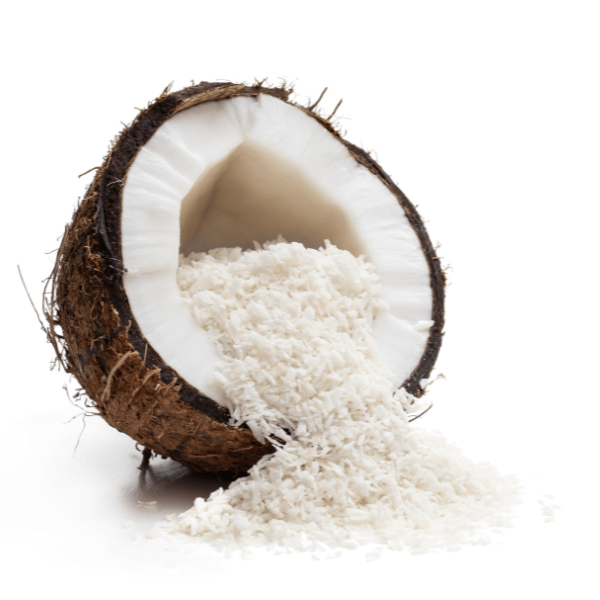
Coconut
Flavour: Creamy, nutty, and milky.
Appearance: Coconuts are round or slightly oval-shaped with a brown, hairy husk.
Nutrition: Source of fibre, healthy fat, and manganese.
How To Enjoy: Coconut can be dried, shredded, and used in baking. Coconut milk and cream is often used in smoothies, pancakes, rice dishes, and curries.
How To Store: Store closed coconuts in a cool, dry place for a couple of months. Open coconut keeps best if the coconut chunks are stored in an airtight container with the coconut water poured over it. This method will keep the coconut for up to five days.
Recipe To Try: Coconut Chia Pudding Breakfast Bowls
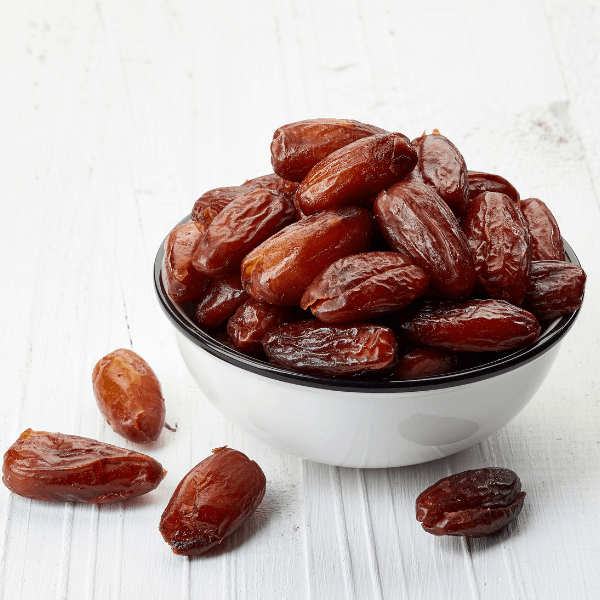
Date
Flavour: Sweet and honeyed.
Appearance: Ripe dates have a dried-up, wrinkly look to them with a colour that ranges from caramel to reddish to dark brown.
Nutrition: Source of fibre, potassium, and vitamin B6.
How To Enjoy: Dates are frequently sold dry, which is how to best enjoy them. Their sweet flavour and sticky texture work well in quick breads, granolas, and smoothies. They also work well on a charcuterie or cheese board and can be used as a substitute for sugar in select recipes.
How To Store: Keep dates in an airtight container in the fridge for up to six months.
Recipe To Try: Nutty Date Energy Bars
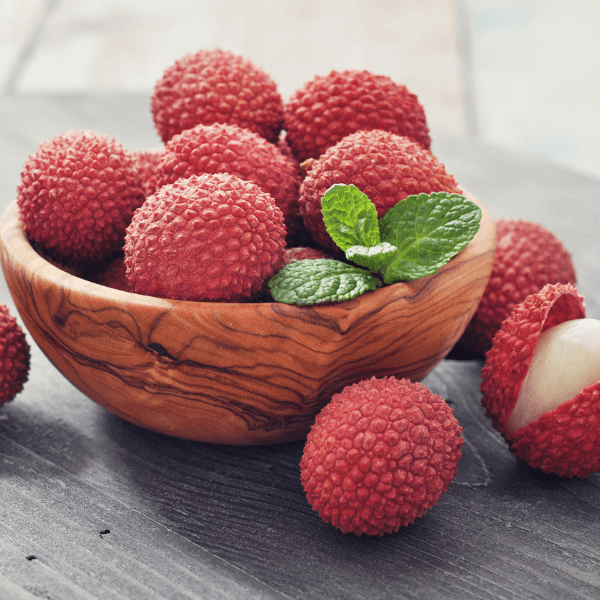
Lychee
Flavour: Sweet, refreshing, and juicy.
Appearance: Lychees are small, round or egg-shaped stone fruits with a scaly, bumpy skin that ranges in colour from pink to purplish-red.
Nutrition: Source of vitamin C.
How To Enjoy: After peeling the lychee fruit, you can enjoy it as a snack, or blended into drinks. The lychee has become a popular ingredient in cocktails and mocktails.
How to Store: Wrap lychees in a paper towel to absorb moisture and place them in an airtight container or plastic bag in the fridge.
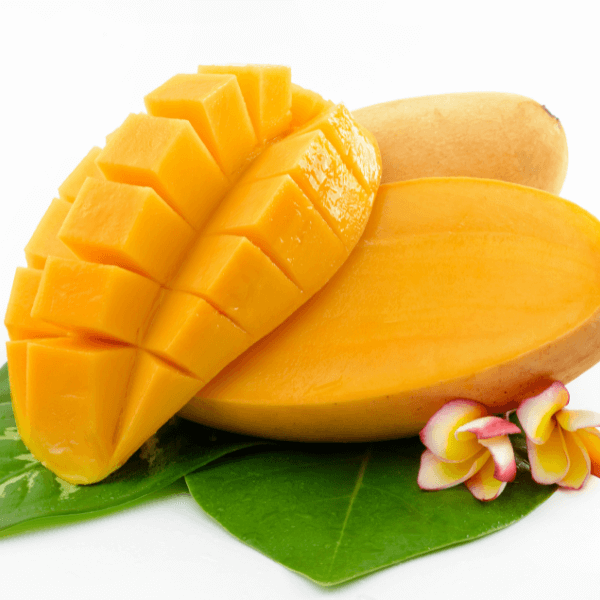
Mango
Flavour: Tangy, sweet, and juicy.
Appearance: Depending on the variety, mangoes can be oval, round, kidney-shaped, or long. They vary in colour from red and yellow to green.
Nutrition: Source of vitamin C, fibre, and folate.
How To Enjoy: A tropical fruit, mango works well in sweet and savoury applications. In addition to being a juicy snack, try slicing mango into salsas or salads, blending into drinks or sorbets, or using in baked goods like tarts.
How To Store: Keep unripe mangoes at room temperature until they ripen. Store whole, ripe mangoes in the fridge for up to five days. Peeled, cut, and cubed mango will keep in an airtight container in the fridge for a week or in the freezer for up to six months.
Recipe To Try: Thai Sticky Rice with Mango
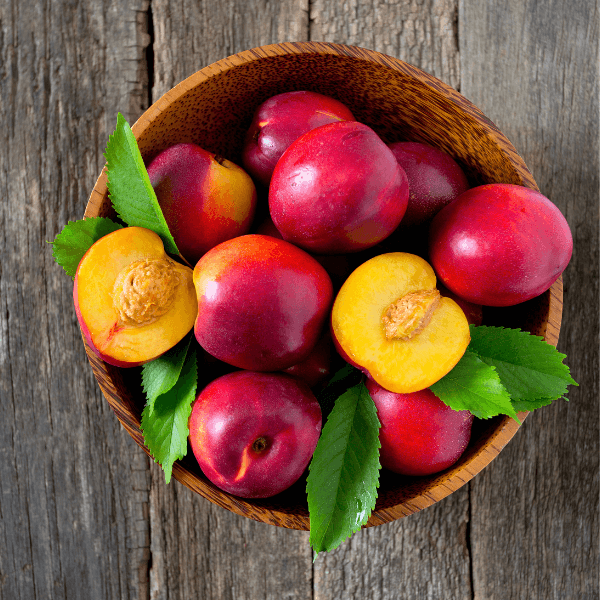
Nectarine
Flavour: Crisp, fresh, and sweet, with a bit of tartness.
Appearance: Slightly smaller than peaches, nectarines lack skin fuzz and often have a more reddish hue.
Nutrition: Source of fibre, vitamins B3 and C, and potassium.
How To Enjoy: Nectarines do well in baked goods, but they really shine in savoury recipes. Sliced into salads or onto flatbreads, this stone fruit really embraces the summer when getting some heat from the grill. Grilled nectarines make a delicious dessert; just drizzle with some honey or maple syrup.
How To Store: Store unripe nectarines on the counter until ripe. Transfer ripe nectarines to a sealed plastic bag in the crisper drawer of the fridge.
Recipe To Try: Nectarine, Prosciutto, and Burrata Salad
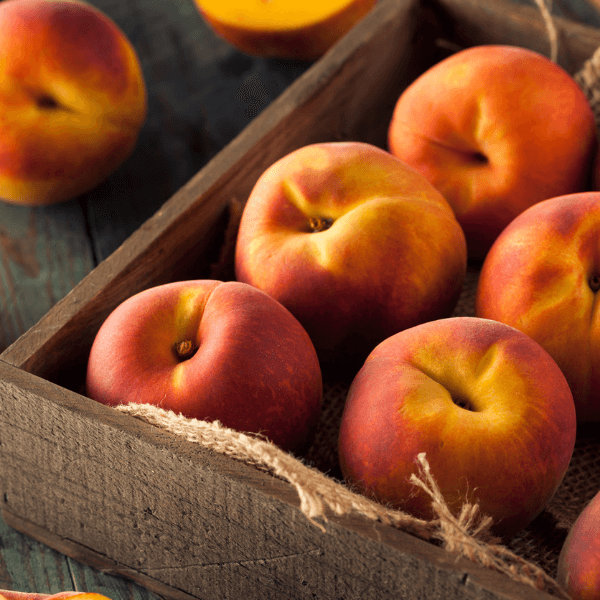
Peach
Flavour: Sweet, juicy, and fragrant.
Appearance: Slightly larger than a nectarine, peaches vary in colour from golden to pinkish-red. Notably, peaches have a soft fuzz on their skin.
Nutrition: Source of vitamins C and A, fibre, and potassium.
How To Enjoy: The most well-known of stone fruits, enjoy peaches as a snack or in desserts like cobblers, crisps, and pies. Transform overripe peaches into jams and chutneys, while peaches that are at peak ripeness are delicious in salads, salsas, and on the grill.
How To Store: Keep unripe peaches on the counter until ripe. Transfer ripe peaches to the crisper drawer of the fridge. Freeze peaches by slicing them into wedges and placing them on a baking sheet before transferring to a freezer bag.
Recipe To Try: Summer Fruit Coffee Cake
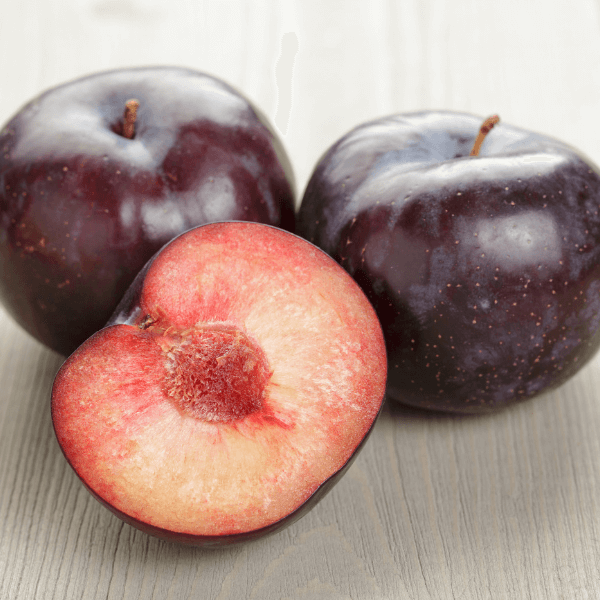
Plum
Flavour: Tart, sweet, and juicy.
Appearance: Plums are smaller than nectarines with smooth, firm flesh and range in colour from yellow to almost black.
Nutrition: Source of vitamins C and A.
How To Enjoy: Red, yellow, deep purple, or black, plums come in many colours, all of which are delicious. Enjoy them in tarts, cakes, jams, or beverages for a sour-sweet flavour.
How To Store: Store this stone fruit at room temperature until ripe. Once ripe, they can be stored in the fridge but should be enjoyed within three days.
Recipe To Try: Mediterranean Almond and Plum Cake
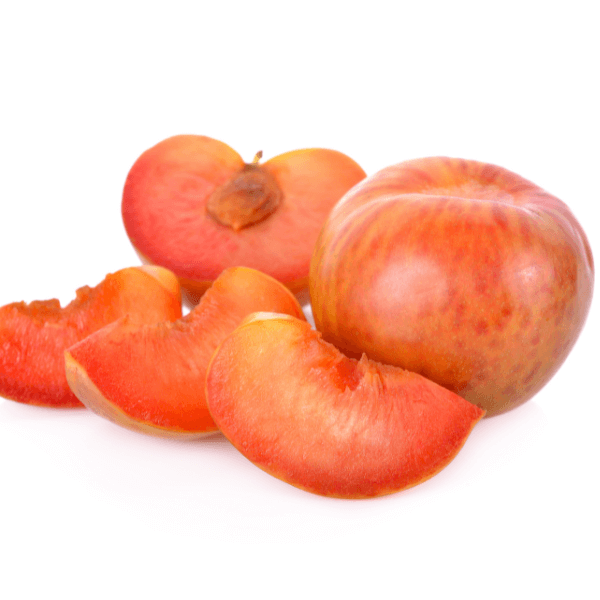
Pluot
Flavour: Very sweet and juicy with tart notes.
Appearance: A plum-apricot hybrid (hence its name), pluots are smooth and can range in colour from gold to red to purple and even green!
Nutrition: Source of vitamins C and A.
How To Enjoy: Enjoy this round stone fruit as a snack, in jams or compotes, and in baked goods like tarts and galettes.
How To Store: Keep pluots on the counter to ripen for a few days. Once ripe, move them to the fridge where they can remain for up to a week.
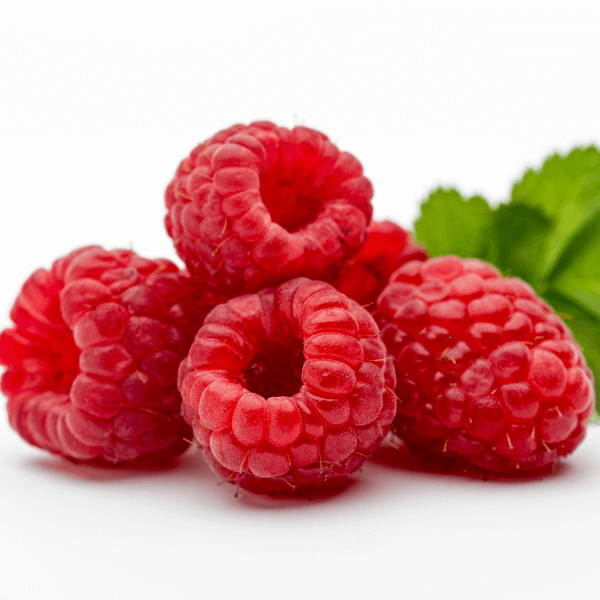
Raspberry
Flavour: Tart, sweet, and slightly sour.
Appearance: Small and round or conical with a velvety red or yellowish skin covered in tiny hairs.
Nutrition: Source of fibre, vitamins C and K, and manganese.
How To Enjoy: In addition to picking your own fresh raspberries and munching on them as a snack, this small stone fruit can be used in loads of delicious ways. Try raspberries in sauces, sorbets, jams, and jellies, or in desserts like muffins, cheesecakes, cakes, tarts, and pies.
How To Store: Remove any bruised or spoiled raspberries from the aerated container and place them, container and all, unwashed in the fridge.
Recipe To Try: Creamy Raspberry Tart



